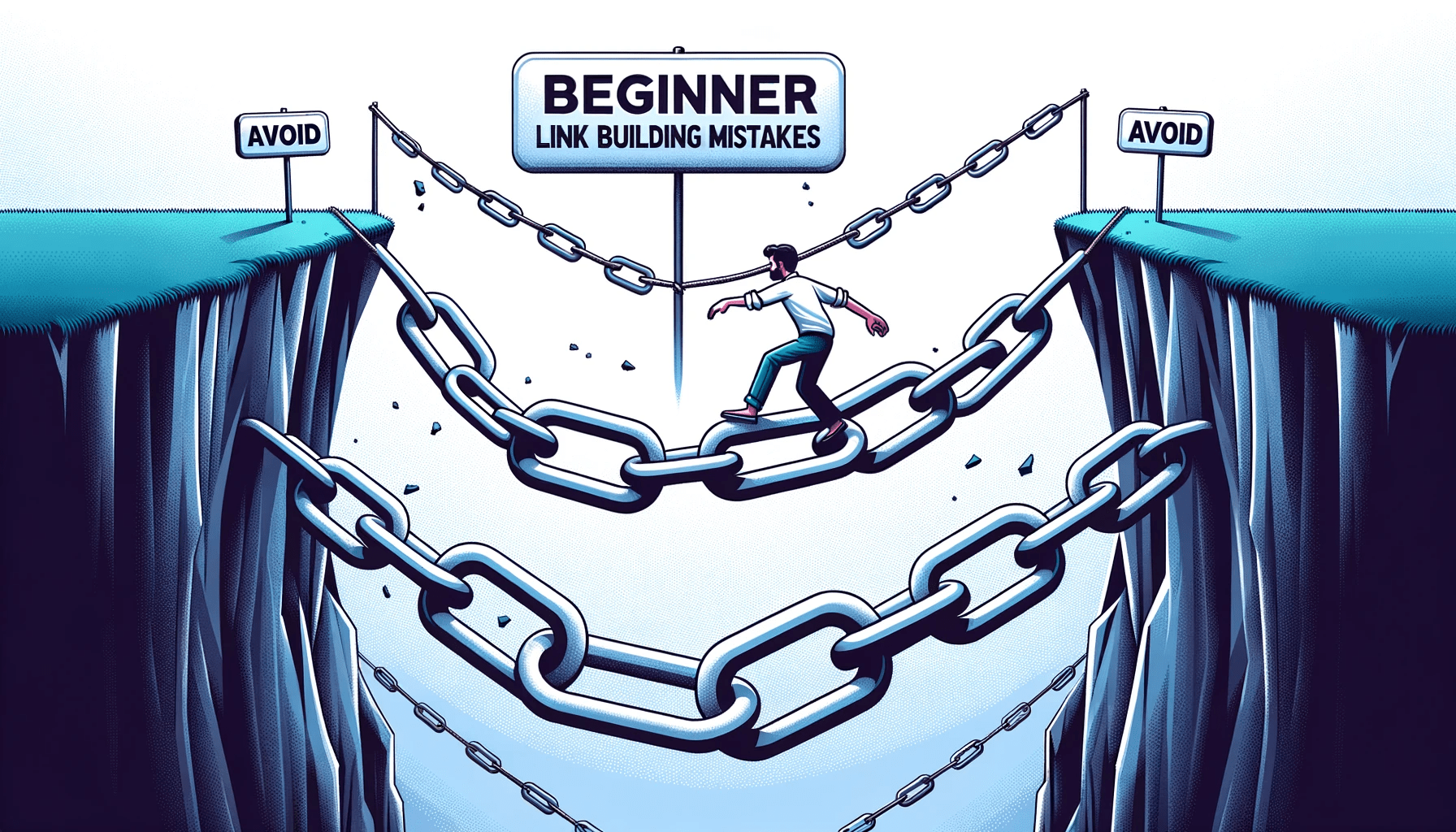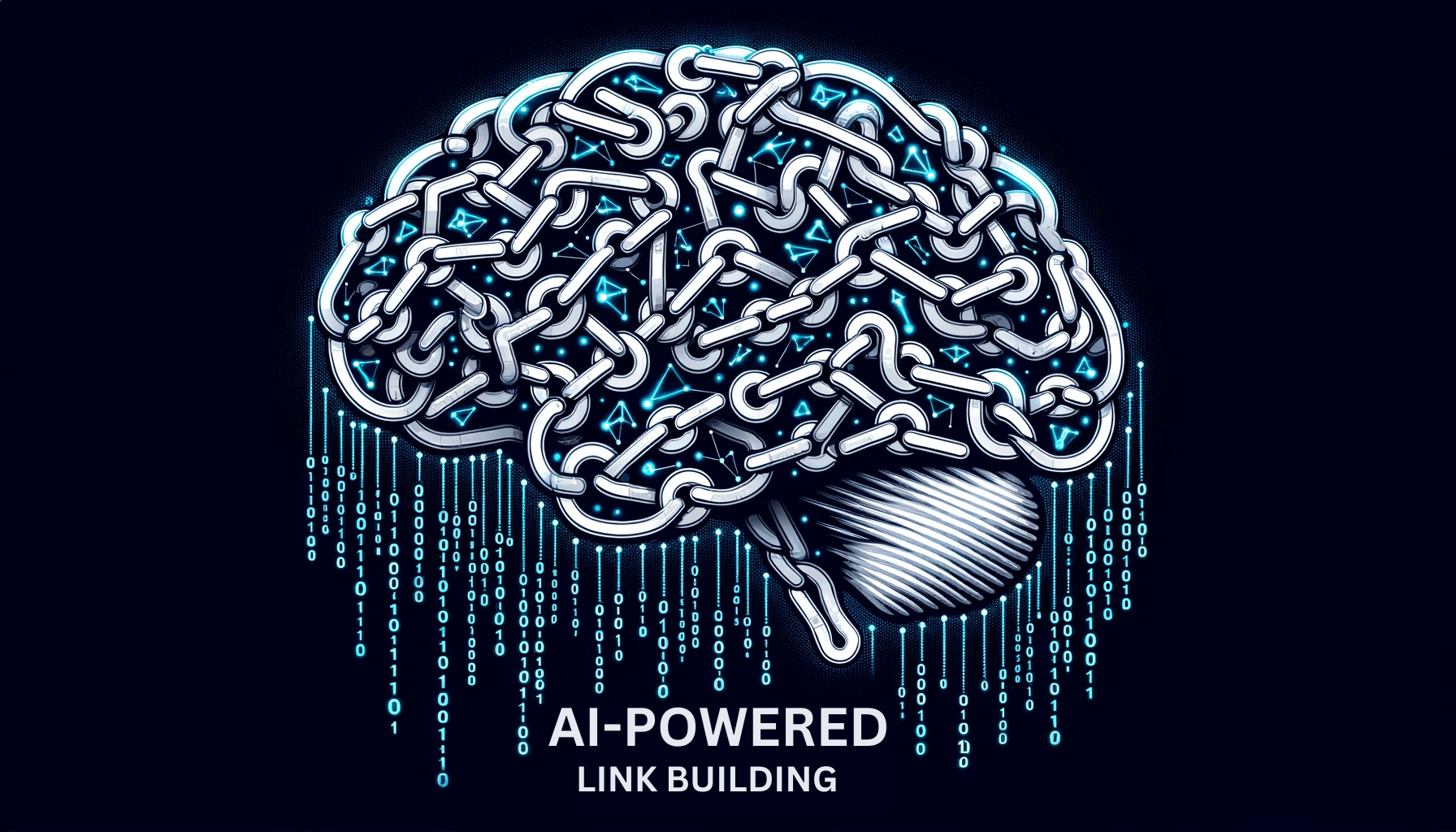Mastering Link Types: Boost Your SEO with the Right Connections
Explore the intricacies of link types and their impact on SEO. Learn about internal and external links, the significance of "nofollow" and "noreferrer" attributes, and how to leverage different link types to drive organic traffic to your website.


In the ever-evolving world of search engine optimization (SEO), understanding link types is crucial for website owners and digital marketers. Links connect webpages and establish relationships between content, but not all links are equal. Each link type has its own significance and impacts SEO performance differently.
This guide explores various link types, their characteristics, and their impact on SEO:
- Internal and external links
- "Alternate," "author," and "bookmark" link types
- The "nofollow" attribute and its effect on link value
- "Noreferrer" and "prefetch" for user experience and privacy
- Editorial links and their contribution to website authority and credibility
By the end, you'll understand how to leverage different link types to boost your SEO efforts and drive organic traffic. Whether you're an SEO professional or a website owner looking to optimize your online presence, this guide will help you unravel the mysteries of link types and harness their power for SEO success.
Understanding Link Types
The Importance of Different Link Types
Different link types play crucial roles in signaling search engines about a website's relevance and credibility:
-
Internal links connect pages within the same domain, aiding navigation and hierarchy. They distribute page authority, boosting each page's SEO value.
-
External links lead to other domains. They provide further reading options for users and build credibility. When originating from authoritative sources, they signal trustworthiness to search engines.
Internal vs. External Links
Internal and external links are crucial to a website's SEO strategy but work differently. Internal links help search engines understand a website's structure and content, potentially boosting its pages' rank in search results. They also enhance user experience by providing easy access to relevant content, keeping visitors on the site longer.
External links, on the other hand, connect a site to the wider web. However, they must lead to trustworthy and relevant sites. High-quality external links can improve a website's authority and credibility, showing it is a valuable part of the online community.
Therefore, balancing internal and external links is key to optimizing both user engagement and search engine visibility.
Various HTML Link Types Explained
In this section, we delve into the specifics of various HTML link types. Each type serves a unique purpose and understanding these can significantly enhance your SEO strategy and user experience. Here's a breakdown of some common and less commonly discussed link types:
| Link Type | Description |
|---|---|
| alternate | Signifies different versions of a web page available for users, such as PDF or mobile versions. Useful when a page is accessible in multiple formats. |
| author | Connects readers to more information about the content creator. Increases transparency and credibility by attributing content to its author. |
| bookmark | Refers to a permanent URL (permalink) that users can bookmark and return to. Ensures dynamic content remains reachable through stable links. |
| help | Points to resources aimed at assisting users with the content or features of the webpage. |
| license | Acknowledges the copyright and licensing information applicable to the webpage's content. |
| nofollow | Indicates the webpage owner does not endorse or assume responsibility for the linked content. Instructs search engines not to pass along ranking credit. |
| noreferrer | Conceals the referral source from the linked page, ensuring privacy and security in site interactions. |
| prefetch | Suggests that a resource may be needed soon and should be retrieved and cached in advance to improve user experience. |
| search | Directs users to a search interface within the site, streamlining access to information. |
| tag | Classifies a webpage within a broader category or keyword system, enhancing discoverability and contextually organizing content. |
| next | Navigational aid that guides users through a series of pages in a forward direction, such as an article sequence or multi-step process. |
| prev | Navigational aid that guides users through a series of pages in a backward direction, complementing the "next" link type. |
Link Types for Webmasters and SEO
Editorial Links
Editorial links are earned when other publishers include hyperlinks in their content that point to a website's resources of their own accord. These links are typically the result of high-quality content that publishers find valuable enough to share with their readers. They enhance a website's SEO by providing signals of trust and authority to search engines. For instance, an authoritative news site may link to a business's industry survey results, thereby granting an editorial link.
User-generated Links
User-generated links arise from areas where content can be created freely by users, encompassing blog comments, forum posts, and wiki entries. These links often have lower SEO value as they can be easily manipulated. However, they still contribute to a site's overall link profile. It's important to monitor these links for quality and relevance since spammy or irrelevant user-generated content can harm a site's reputation.
Dofollow vs. Nofollow Links
Dofollow links allow search engines to follow the link and pass on link equity, while nofollow links include a specific tag that tells search engines not to follow the link or pass on any authority. The strategic use of nofollow links can be beneficial, as it can direct search engine crawlers to focus on the most relevant pages and conserve crawl budget. For example, nofollow links are recommended for user-generated content or paid advertisements to ensure clarity regarding endorsement.
Backlinks: Natural, Manually Obtained, and Self-created
Backlinks come in various forms, each playing a role in a website's search engine ranking. Natural backlinks are earned without any direct action, as content naturally attracts links due to its value. Manually obtained backlinks are the result of outreach activities, such as contacting webmasters to link to an upgraded piece of content. Self-created backlinks may come from guest blogging or other similar activities that directly insert links pointing to a website.
Best Practices for Using Different Link Types
This section is focusing on best practices. Good strategies ensure effective use of links to enhance both user experience and SEO performance.
Optimizing Anchor Text
Optimizing anchor text proves critical for both navigation and SEO performance. Anchor texts should be relevant, descriptive, and succinct. For example, if a hyperlink directs to a page about organic gardening tips, the anchor text might accurately be "Organic Gardening Tips." Over-optimized anchor text can appear manipulative to search engines, potentially harming a site's ranking.
Consistency in anchor text across a website ensures clarity. Mix exact match keywords with variations to avoid seeming artificial. For instance, a mix might include "Organic Gardening Techniques" or "Tips for Organic Gardening."
It's also essential that anchor texts are mobile-friendly, considering the significant number of users who access the internet on mobile devices. Short, clear, and easy-to-tap anchor texts enhance the mobile user experience.
Building a Healthy Backlink Profile
A robust backlink profile entails a variety of link types from relevant, authoritative sources. The hyperlinks directing to a website should reflect a natural link-building process, including editorial links, guest blogging efforts, and the strategic use of internal links.
Editorial links, accrued when other sites recognize a website's content quality, boost credibility. Guest blogging, when done correctly, exposes a site to new audiences while obtaining quality links. Internal links connect content across a site effectively, facilitating user navigation and spreading link equity, favorably impacting site architecture.
Aim for links from domains with high authority which can be tracked using tools like Ahrefs. This influence lends trustworthiness to the recipient website. Collaboration with niche-related businesses can generate targeted traffic, enhancing the site's relevance within a specific area.
Avoiding Common Linking Mistakes
Steering clear of linking errors is just as important as proactive optimization efforts. Common linking mistakes include using generic anchor text like "click here," which lacks descriptive value, and creating links that are not relevant to the content, misguiding both users and search engines.
Overusing the same anchor text or acquiring an unnatural amount of links in a short time may flag a website as spammy. Consider a natural pace of growth and diversification in link types to avoid search engine penalties.
Refraining from participating in link schemes, such as the creation of self-generated links intended to deceive search engines, is imperative; such tactics can incur serious SEO repercussions. Always employ white-hat SEO techniques like creating high-quality content that naturally attracts backlinks. For more insights on effective strategies, check out our detailed guide on this topic.

Beginner Link Building Mistakes to Avoid in 2024
Link building is vital for SEO. Yet, many beginners stumble into pitfalls. Discover prevalent link-building errors and sidestep them to solidify your SEO.
By adhering to these best practices, webmasters can effectively employ different link types to enhance SEO strategies, leading to improved site visibility and better user engagement, without falling foul of search engine guidelines.
Strategies for Acquiring Quality Links
Guest Posting and Outreach Links
Acquiring backlinks through guest posting is a widely adopted strategy. It involves writing content for another website in exchange for a link back to one's own site. Selecting websites with significant relevance to the topic at hand enhances the value of the backlink. Securing guest posting opportunities can involve searching for websites with a "write for us" page, directly pitching content managers, or leveraging existing relationships from previous link-building efforts. For instance, after obtaining a link through an alternative strategy, one might propose a guest post—the likelihood of acceptance increases if the content offered is of substantial value.
In guest posting exchanges, presenting the value proposition upfront can be advantageous. It resonates well when the outreach email immediately addresses what one can offer, such as including a link to the recipient's article in an upcoming guest post, thereby flipping the traditional outreach model for more effective communication. To explore how artificial intelligence can revolutionize this process, read our featured article:
Links from High Authority Domains
Links from high authority domains are pivotal in augmenting one's site ranking. Domain Authority (DA) is a critical metric gauging the potential of a domain to rank in search engine results. Linking from high DA sites generally confers more ranking power. Similarly, Trust Flow signals the trustworthiness of a site based on its backlink quality. It's beneficial to pursue links from domains that boast high Trust Flow scores.
Utilizing Internal Links for SEO
Internal linking, the practice of linking to other pages within the same domain, is an essential aspect of on-site SEO. It helps search engines understand site architecture, distributes 'link equity' among pages, and enhances user navigation. The strategic use of anchor text in internal links aids search engines in identifying page topics and relevancy. Ensuring that internal links connect to pages with high Page Authority can also bolster the ranking capability of lesser-known pages.
Evaluating Link Quality and Relevance
Tools to Analyze and Monitor Backlinks
To effectively analyze and monitor backlinks, several tools are available that provide insights into a website's link profile. These tools enable webmasters to assess the trustworthiness, topic relevance, and overall authority of the pages linking to their site.
Determining the Value of a Link
When ascertaining the value of a link, several key factors are taken into account. A link's value is often predicated on the trustworthiness and authority of the linking page, as links from renowned and reputable websites carry more weight. Similarly, relevant links from pages closely associated with the website's topic signal to search engines the content's contextual alignment, enhancing its value.
Conclusion
Mastering the art of linking is crucial for any website's SEO success and overall digital presence. By leveraging the right mix of internal and external links and employing strategic anchor text, website owners can significantly boost their site's visibility and user engagement.
